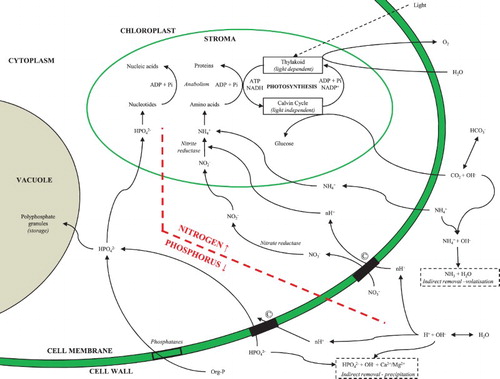Figures & data
Figure 1. Schematic diagram of a microalgal cell summarising the biochemical pathways of nitrogen and phosphorus remediation, including indirect mechanisms (highlighted within a dashed box). © Represents co-transportation.

Table 1. Ammonium and phosphorus removal by microalgal cultures for varying waste streams.
Table 2. Summary of microalgal bioreactor designs, operating parameters and performance.
Figure 3. Influent concentration versus effluent concentration for (a) ammonium and (b) phosphate; and treatment period versus remediation efficiency for (c) ammonium and (d) phosphate for all bioreactors. HRAP (▪), biofilms (◊), matrix-immobilization (▴), PBR (○) and parity line (- -).


